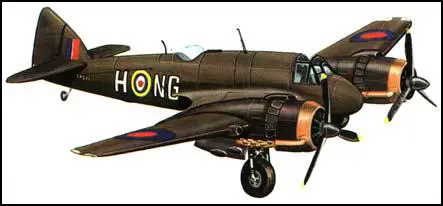Bristol Beaufighter
The Bristol Aeroplane Company began work on the Bristol Beaufighter Mk. IF in the winter of 1938. The objective was to produce a fast twin-engine fighter that was capable of long-range flights.
The prototype first flew on 17th July, 1939. Powered by two Bristol Hercules engines, it had a maximum speed of 321 mph (516 km) and had a range of 1,170 miles (1,890 km). It was 41 ft 4 in (12.50 m) long with a wingspan of 57 ft 10 in (17.63 m). It was armed with four 20 mm cannons and six machine-guns.
The Bristol Beaufighter Mk. X bomber was introduced in 1943. It had a maximum speed of 330 mph (531 km) and had a range of 1,470 miles (2,365 km). It was 42 ft 6 in (12.95 m) long with a wingspan of 57 ft 10 in (17.63 m). It could carry 12,127 lb (964 kg) torpedo and 500 LB (226 kg) of bombs.
During the Second World War a total of 5,562 Bristol Beaufighters were built and they served as night-fighters, fighter-bombers, torpedo-carriers and ground-attack aircraft. After the war it remained in service with the Royal Air Force until 1950.

